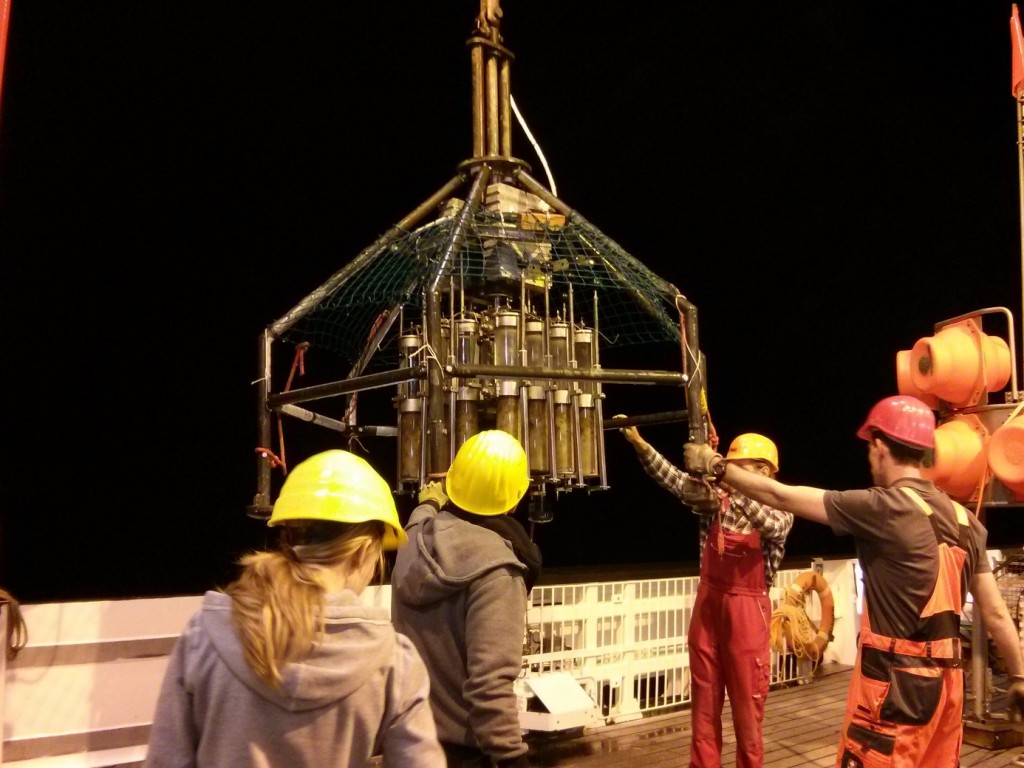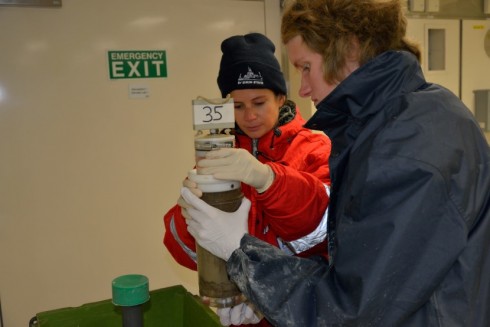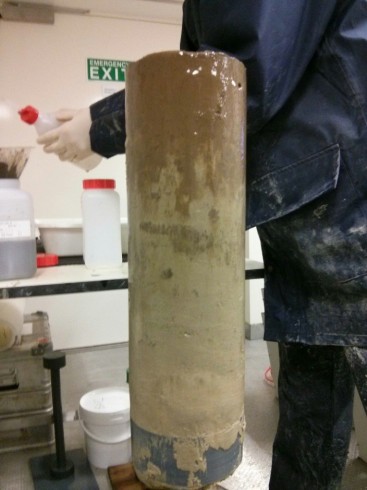Among all the amazing high-tech equipments that are being used in this SO242/2 Sonne cruise, such as the OFOS (Ocean Floor Observation System), the ROV (Remotely Operated Vehicle) and Landers measuring different environmental conditions at the seafloor, I present you a very traditional equipment used ubiquitously in deep-sea research: the Multicorer, or the MUC, as it is normally called.
The MUC we are using in this cruise is composed of 12 plexi-glass tubes which are automatically closed whenever they reach the seafloor, bringing cores filled up with sediment. Its main advantage is that it brings undisturbed sediment to the surface, a very important aspect when studying small organisms dwelling the seabed, such as the so-called meiofauna. The meiofauna is composed by organisms which are smaller than 1 mm, so we can barely see them without the help of a binocular or microscope. They mainly live in the first centimeters of the sediment and the community can change completely within a difference of 1-3 cm. For this reason it is very important that every layer of sediment is preserved as originally found in the seafloor.
With the MUC, differences between the impacted and reference areas are going to be compared in the DISCOL area in a larger scale, while small-scale patterns are going to be investigated with push cores retrieved with the ROV. Until the present moment, as mentioned in other blog posts, we have observed that there is a clear difference in sediment composition below 15 cm sediment depth, where the sediment becomes whitish and harder. Within the disturbed areas we have observed that this whitish sediment is transferred to the surface due to the effect of ploughing and might have an effect in the fauna abundance and composition within the different sediment layers.
The samples collected on this cruise are going to be processed and analyzed back in the lab, but the exciting results already found in the biochemistry of the different areas already makes me excited about what we are going to find in the fauna.
Lidia Lins, PhD Candidate Ghent University.



Hi Lidia,
always nice to hear/read from you! 🙂
Wish you further successful samplings and a great time on Sonne! 🙂
Hugs,
Alex